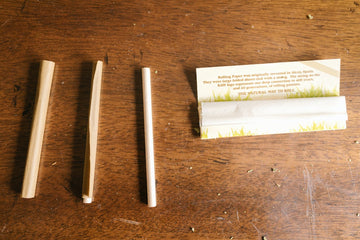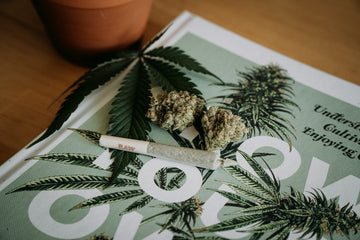Cannabis and Film: Analyzing Depictions of Marijuana in Cinema
Cinema has long been fascinated with the portrayal of drug use, including marijuana consumption. From the countercultural films of the 1960s and 70s to contemporary comedies and dramas, marijuana has been depicted in various ways, reflecting shifting societal attitudes towards the drug. In this blog post, we'll explore the diverse representations of cannabis in film, examining how it has been used to convey themes of rebellion, escapism, and cultural identity.
The Countercultural Era:
The 1960s and 70s marked a turning point in cinematic depictions of marijuana, coinciding with the rise of the countercultural movement and changing attitudes towards drug use. Films like "Easy Rider" (1969) and "Reefer Madness" (1936, but gained popularity in the 1970s) captured the zeitgeist of the era, portraying marijuana as a symbol of rebellion against authority and conformity.
In "Easy Rider," directed by Dennis Hopper, marijuana is depicted as a sacrament of the hippie counterculture, a means of expanding consciousness and transcending societal norms. The film's protagonists, played by Hopper and Peter Fonda, embark on a cross-country motorcycle journey fueled by drugs, including marijuana, as they search for freedom and self-discovery in a changing America.
"Reefer Madness," on the other hand, takes a more sensationalistic approach, depicting marijuana as a dangerous drug that leads to insanity, violence, and moral decay. The film's exaggerated depiction of the supposed dangers of marijuana became a cult classic among countercultural audiences, serving as a campy satire of anti-drug propaganda.
The Stoner Comedy Genre:
In the decades following the countercultural era, marijuana became a staple of the comedy genre, giving rise to the subgenre known as "stoner comedy." Films like "Cheech and Chong's Up in Smoke" (1978) and "Harold & Kumar Go to White Castle" (2004) embraced marijuana culture with irreverent humor and exaggerated antics.
"Cheech and Chong's Up in Smoke," directed by Lou Adler, follows the misadventures of two stoner friends, played by Cheech Marin and Tommy Chong, as they navigate the Los Angeles drug scene in search of marijuana. The film's slapstick humor and zany plot twists became iconic symbols of cannabis culture, resonating with audiences and influencing generations of comedians.
Similarly, "Harold & Kumar Go to White Castle," directed by Danny Leiner, follows two friends on a quest to satisfy their munchies cravings at a White Castle restaurant. Along the way, they encounter a series of absurd obstacles and comedic situations, all while under the influence of marijuana. The film's subversive humor and diverse cast helped challenge stereotypes and redefine the stoner comedy genre for a new generation.
The Evolving Landscape:
In recent years, cannabis has been portrayed in a more nuanced and diverse manner in cinema, reflecting changing attitudes towards the drug and its place in society. Films like "Pineapple Express" (2008) and "The Big Lebowski" (1998) offer complex portrayals of marijuana culture, blending humor with elements of crime, drama, and existentialism.
"Pineapple Express," directed by David Gordon Green, follows a process server and his drug dealer as they go on the run after witnessing a murder. The film combines elements of action and comedy with a heartfelt exploration of friendship and loyalty, all against the backdrop of marijuana legalization in California. Despite its comedic tone, "Pineapple Express" also touches on darker themes of violence and addiction, offering a more nuanced portrayal of marijuana use.
"The Big Lebowski," directed by the Coen brothers, centers on "The Dude," a laid-back slacker who becomes embroiled in a convoluted kidnapping plot. Marijuana is a constant presence in the film, with The Dude and his friends frequently indulging in joints and White Russians as they navigate the absurdities of Los Angeles. While the film is primarily a comedy, it also explores themes of identity, alienation, and the search for meaning in a chaotic world.
Cannabis has been a recurring motif in cinema for decades, serving as a symbol of rebellion, camaraderie, and cultural identity. From the countercultural films of the 1960s to the stoner comedies of the 2000s, marijuana has been depicted in various ways, reflecting changing attitudes towards the drug and its place in society.
As legalization continues to spread and marijuana becomes increasingly integrated into mainstream culture, we can expect to see even more diverse and nuanced portrayals of cannabis in film. Whether used for comedic effect, social commentary, or dramatic tension, marijuana will continue to be a rich source of inspiration for filmmakers seeking to explore the complexities of human experience.




















